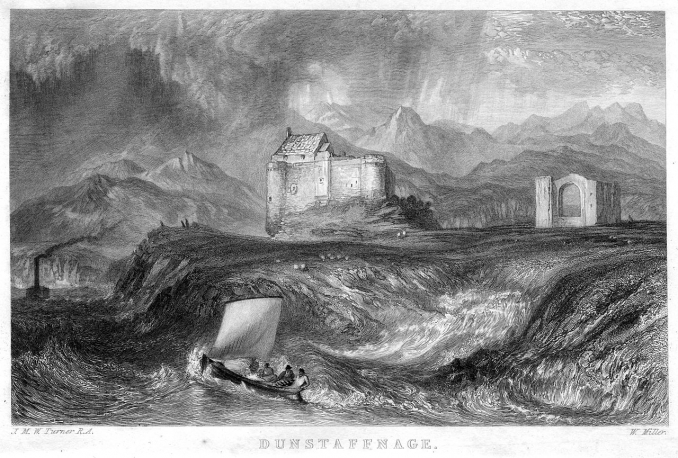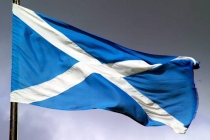Dunstaffnage Castle - Caisteal Dhùn Stadhainis

Dunstaffnage Castle (Scottish Gaelic: Caisteal Dhùn Stadhainis) is a partially ruined 13th century castle about 3 miles north of the town of Oban, Argyll and Bute, Scotland (Scottish Gaelic: An t-Òban, Earra-Ghàidheal agus Bòd, Alba). The castle stands on a promontory at the south-west of the entrance to Loch Etive. It was built by the MacDougall lords of Lorn, but had been in the possession of the Clan Campbell since the 15th century. The castle and grounds are open to the public.
Dunstaffnage was an important strategic site in the Gaelic kingdom of Dál Riata from the 6th and 7th centuries and it is said that the Stone of Destiny was kept here before being moved to Scone Palace in 843 AD. There was a castle here in the time of the Norse - Gaelic Somerled, Lord of the Isles. These Norse-Gaelic origins can also be found in the name of the site with dun in the name meaning "fort" in Gaelic, while the rest of the name derives from Norse stafr-nis, "headland of the staff". It became the seat of Duncan MacDougall, Lord of Lorn and grandson of Somerled in the second quarter of the 13th century.
Most of the surviving castle was built in the 13th century by the Macdougalls. It was captured by Robert the Bruce in 1309 and passed to the Earls of Argyll in 1470. Dunstaffnage is an irregular quadrangular structure with rounded towers at three of the angles. The east tower was rebuilt in the late 15th century as a gatehouse. The castle was burned in 1685 during an attempted uprising by the Earl of Argyll against James II and VII. It has formidable stone curtain walls and measures approximately 115 by 98 ft, with a circumference of about 390 ft. Inside the courtyard are the remains of the great hall and the 18th century residential compartments. During the Jacobite uprising of 1746-46, Flora MacDonald was imprisoned here after assisting Prince Charles Edward Stuart ('Bonnie Prince Charlie') to escape.
The ruins of the 13th century Dunstaffnage Chapel are about 490 feet to the south-west of the castle. It is about 66 by 20 ft, and once had a roof of timber. Noted for its high quality detailed stonework it was built as a private chapel by Duncan MacDougall of Lorn
Image: Dunstaffnage Castle, 1836 engraving by William Miller after J. M. W. Turner.
Link: Historic Environment Scotland - Scottish Gaelic: Àrainneachd Eachdraidheil Alba.
Celtic nation:
- Scotland
Itinerary:
- Scotland Argyll & Bute
Place type:
- Castle





